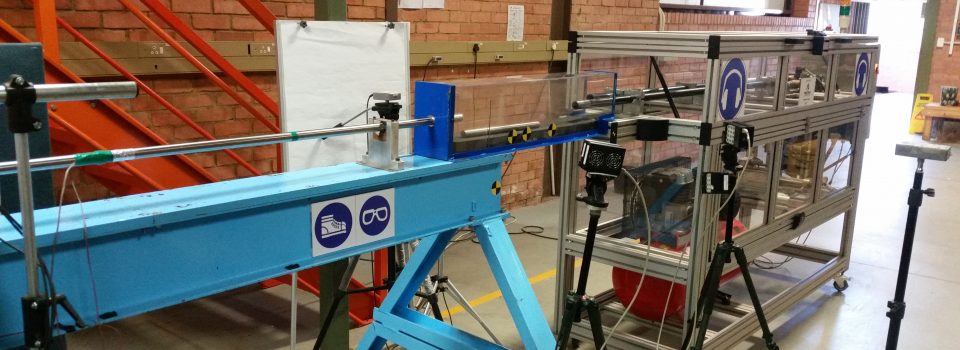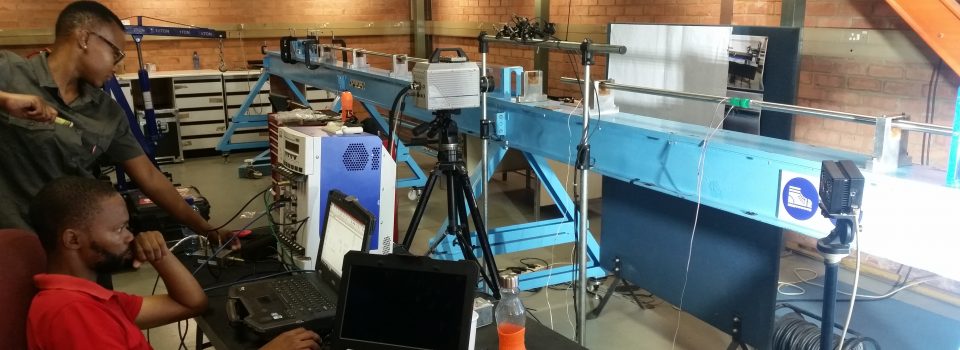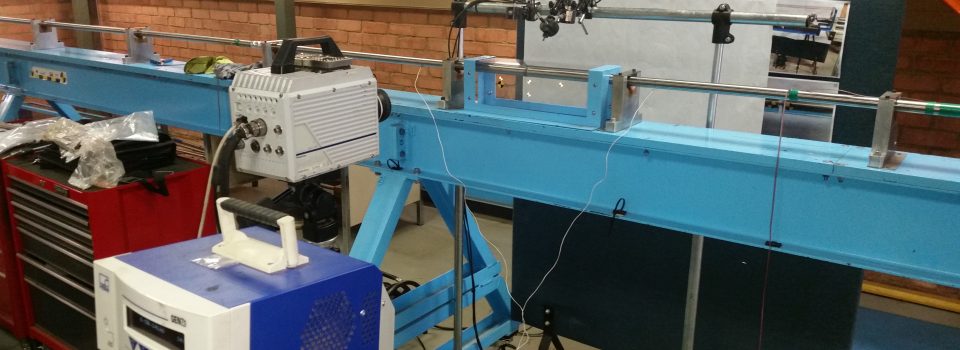The CSIR deals greatly with high impact blast load explosives in the form of projectile impacts or shrapnel. These blast loads have a negative effect on materials that are used for protection amour in military vehicles. It is thus needed to characterise these materials using a Split Hopkinson Pressure Bar (SHPB) in order to understand the behaviour of the materials.
In a SHPB set-up, a test specimen is sandwiched between the surface areas of the incident and transmission pressure bars. These bars have strain gauges (sensors) that are used to measure the strain of a specimen. A pneumatic impactor is used to propel a cylindrical striker bar, which impacts the pressure bars, thus creating a stress wave that propagates through the specimen. The stress wave pulses are then used to derive the mechanical properties of organic and inorganic materials due to dynamic loading conditions. A schematic diagram of the SHPB set-up is shown in the figure below:

If you are using a browser that is not showing the embedded video you can view it here
If you are using a browser that is not showing the embedded video you can view it here
If you are using a browser that is not showing the embedded video you can view it here






